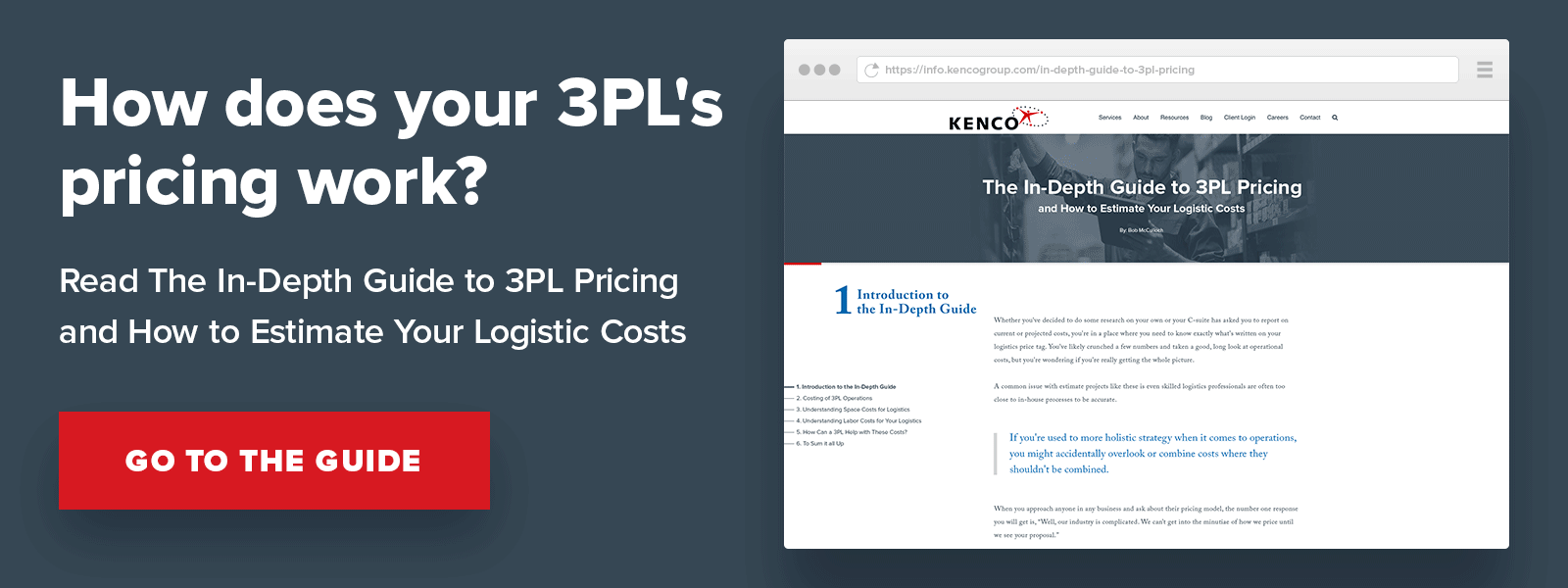
Introducing a warehouse management system, or WMS, is a natural result of business growth—in fact, you might even consider it a sign you've "made it" in your industry. That's because a WMS provides scalability options that other systems can't match up to, all while delivering versatility and optimization across your entire supply chain.
As with all improvements, however, the big question remains: how much should you be paying for your system?
Factors to Consider When Searching for a WMS
While all warehouse management systems will have some level of versatility in common, you don't want to invest in a tool that will fall short of your needs or buy in deeper than you need to. That's why it's a best practice to make a checklist before you even get to the demo level with a potential WMS.
Consider these important facets of your business, and make sure that whatever WMS you're considering aligns well with your answers:
The complexity of your operations
How does product move through your warehouse? How many hands need to touch it for a product to be considered properly stored, or shipped? The more individuals involved in the process, the more complexity your system will need to handle.
Order volume can be another guiding factor here - the number of units moving through your warehouse on a typical day, or during peak season, can help whittle down lesser contenders. However, this complexity shouldn't be a static number.
Cost needs to be viewed through a holistic lens that will translate a second or third warehouse savings that your first warehouse might not.
What types of picking are used in your warehouse?
Whether you use case picking, pallet picking, or other methods, be aware that each of these is handled differently in the digital eyes of a WMS. The timing, workflow, and optimization will look different for each method, so be sure your potential WMS has a proven track record with your pick style. A customer service or sales representative for your program of choice should be able to cite examples of their system in use for companies in your industry.
Does your business have high parcel requirements, or use LTL truckload strategies?
Whether you lean heavily on safety stock or pride yourself in running a lean operation, your WMS needs to understand and respect that need. While most warehouse management systems have easily customizable backends, starting on common ground will only improve your processes going forward. *blockquote* Make sure your potential WMS emphasizes freedom of choice over an inbuilt tendency to calculate too conservatively or too liberally.
Number of system users
 Too few users might mean you're paying for software or licensing packages you don't need to, and ultimately wasting money. Too many users could bog down the system, lock it up, or even force you to pay fees on top of new user charges.
Too few users might mean you're paying for software or licensing packages you don't need to, and ultimately wasting money. Too many users could bog down the system, lock it up, or even force you to pay fees on top of new user charges.
Do a headcount before you start shopping. Consider the rate you've added staff in the last few years and keep that threshold in mind as you search for the right WMS fit. Don’t forget to take additional hires during peak season into consideration.
What variables will your WMS need to connect with?
The requirements for radio frequency picking are vastly different than those used in paper picking, likewise with voice picking. Your system needs to know those differences and can integrate with the files your system currently produces, be they EDI, XML, APIs, or flat files.
The more advanced your warehouse technology and approach is, the more you should expect to pay. Bear in mind, however, that it is money well spent: you'll need to upgrade eventually, and doing it at the onset rather than after you've already fallen behind is better for your business.
So… How Much is Typically Spent on a WMS?
The answer may surprise you, mainly because it isn't a number. In short, the answer is typically "not enough."
Experienced WMS users will tell you that you'll spend far more making up for shortfalls in an ill-fitting "cheaper" WMS than they would have buying the proper one from the start.
If you want to know how much you'll spend on a WMS, there's only one real way to find out—calling and asking questions, scheduling the demos, and getting down to brass tacks with sales reps. Before you contact a vendor, have an internal discussion about your company’s questions and requirements regarding WMS functionality.
With this information, a vendor will be able to hear out your budget and make suggestions for using their products with the smallest financial pinch possible. After all, they know that if you stay in business, that means repeat sales for their company!
Depending on Your Industry and Product:
Expect a higher quote if your company's products are regulated. Oversight by agencies like the FDA in the pharmaceutical industry will drive costs up via compliance—likewise in industries that require traceability for products from manufacturer to consumer. Products that require containment, such as coal or gas, also tend to have a higher price tag. Finally, any industry that could potentially issue a recall would feel a lot more comfortable working with a WMS-empowered partner, ready to run reports and send out customer notices at a moment's notice.
Depending on the Type of WMS:
Some overhead, however, can be neatly side-stepped by opting for cloud storage for your WMS. A cloud-based WMS not only means you gain valuable floor space in your warehouse again, but it also means your entire team will be able to check in and report issues as they happen. While some fear having their data “offsite,” today’s cloud-based systems are safer than on-premise systems. Cloud-based systems provide an unprecedented amount of support across work computers, mobile devices on the go, and even tablets seamlessly. With a cloud-based system, you also gain scalability to flex as demand rises during peak seasons.
Post-Implementation Costs
There aren’t many hidden costs that come with a WMS, but some costs may be unexpected post-implementation.
After your WMS has been running for four to six months, you may need to reconfigure, enhance, or upgrade your system. Be cautious about making changes after implementation. Each change you make will need to be reevaluated, which can be extensive and expensive.
Don’t forget about the time and effort that will go into training your workforce with the new WMS. You may need to adjust the amount of “boots on the ground” after implementation, as well as after your operation is running smoothly with the new WMS. All personnel and business changes will affect your costs.
Tip: Train an on-site “Super User” to maintain your WMS. This will prevent you from having to involve the IT department with every issue you have.
The High Price of Cutting Corners
For those afraid of the high price tag of a WMS and are trying to find ways to minimize your cost: don’t do it. Cutting corners adds risk, and failure will likely cost you more in the long run.
If you are given the choice to reduce your complexity up front, your operations will be interrupted when you choose to fully implement later.
To Sum It Up
If you came in search of a number while you're determining how much your WMS should cost, hopefully, these guidance tips will be worth consideration. We also invite you to take a look at our latest eBook, the In-Depth Guide to 3PL Pricing, where you'll gain additional insight that you can immediately put to work behind the warehouse walls.



